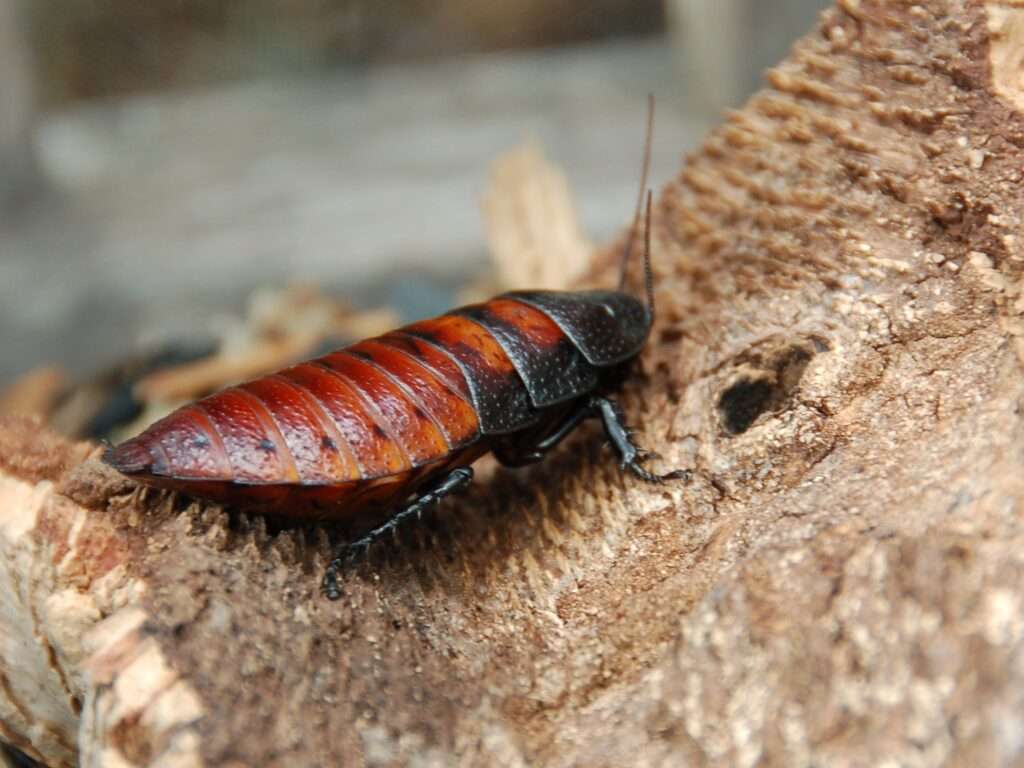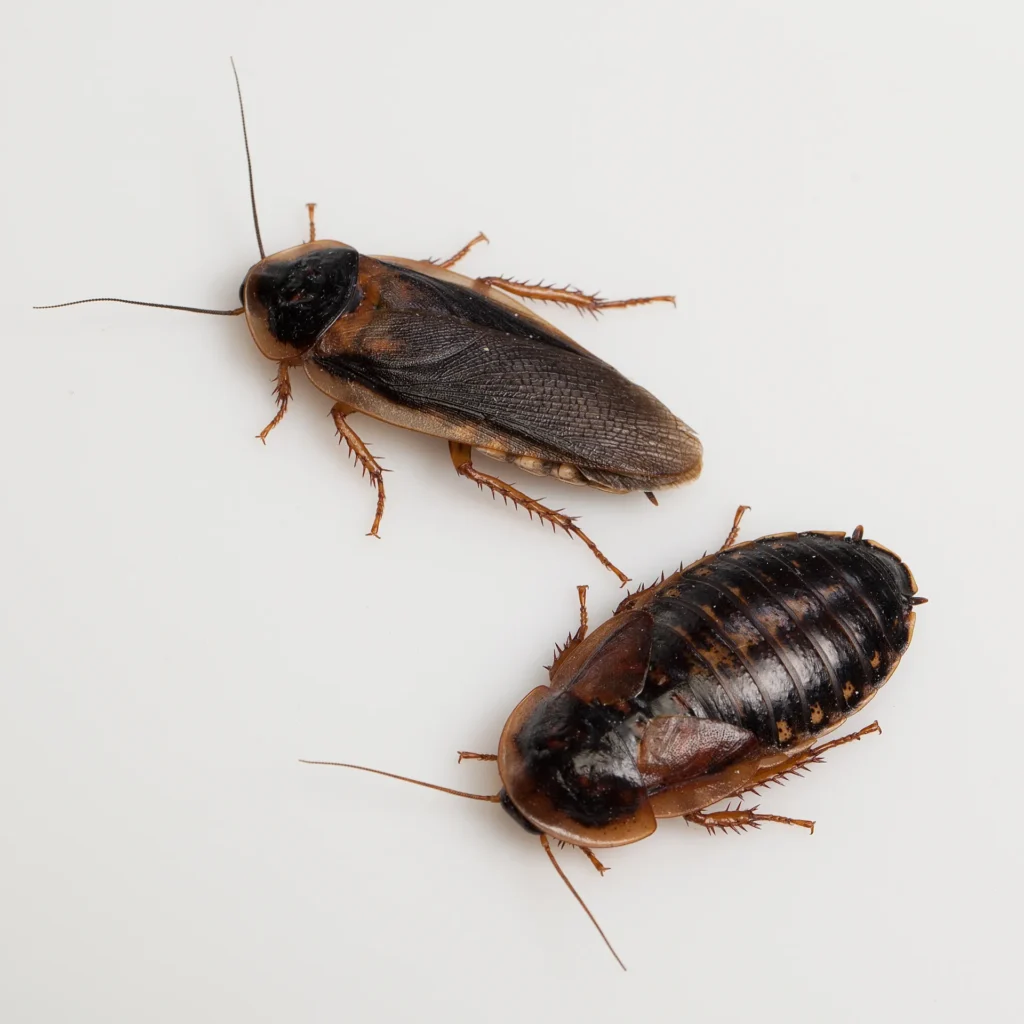
This cockroach (Shelfordella lateralis, sometimes known as Blatta lateralis), commonly referred to as the rusty red cockroach is a native to a region that stretches from northern Africa to Central Asia. It is mostly an outdoor dweller. Adults are approximately 1.2 in long. Adult males are slender, brownish orange or red. These have yellowish long wings that enable them to glide and attract females. The adult females are wider than the males and have short vestigial wings. They are dark brown to black in hue with cream-colored markings on the shield and a cream-colored stripe around their wings. Nymphs lack wings and have a brown front and a black back.
Habitat
The species can be found in northeastern Africa, the Caucasus Mountains, and central Asia. Unlike certain cockroach species, such as the German and brown-banded cockroaches, the Turkestan cockroach is predominantly an outdoor insect and not renowned as an aggressive inside pest, however it will frequent regions near homes if shelter can be obtained.
Diet
After the sun sets, it forages, consuming a wide range of food and non-food items, including trash, compost, leaf litter, and dead or decaying animals.
Appearance
- The males have longer, yellow-tinted wings that are employed for gliding and short flights, and they are also more slender than the females. On the other hand, females have short, stubby wings that are cream or white around the margins.
- If a red runner roach flies into home, it is doubly likely that it is a male as the females are unable to fly.
- The males are normally bigger than the females, and both sexes reach a maximum length of around an inch, making them comparable in size to the Oriental cockroach.

Life Cycle
The female Turkestan cockroach has a life expectancy of at least one year and a half and often produces 14 nymphs at a time. She swiftly reaches breeding age and can give birth to up to 350 cockroaches during her lifespan, which is a remarkable quantity for a cockroach species of its size.
There are effects on the natural world from those numbers. Due to their rapid population growth, Turkistan roaches are driving out Oriental cockroaches from areas where they had previously lived for many years.
Uses
Pet food
Turkestan cockroaches, which are preferred in part, because they don’t burrow and can’t scale smooth surfaces, feed to pet reptiles are occasionally kept in the US and other insectivores. The most common feeder insect, the cricket, has long been replaced by cockroaches because of the cricket’s expense, short lifespan, odor, and loudness.
Parasite Host
In Iraq, the parasitic wasp Ampulex assimilis’ larvae have been found to live on the parasite host Shelfordella lateralis. The cockroach is stung by an adult wasp, which then drags or leads it to its nest by its antenna, places its egg on the mid leg femur, and finally covers the nest with debris. After hatching, the wasp larva feeds on the cockroach’s exterior before digging within to find more food and mature into a pupa.
Reason of not Keeping as Pet
Turkestan cockroaches, like other cockroach species, can seriously harm people’s health and can be found inside of residences and commercial buildings. They introduce bacteria, parasites, and human diseases that can make people very ill through their saliva and faeces, which can also cause allergies and asthma.
Table





